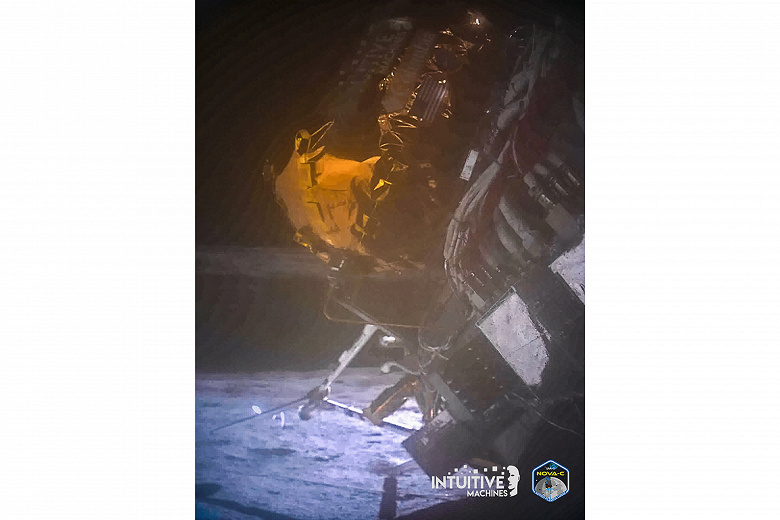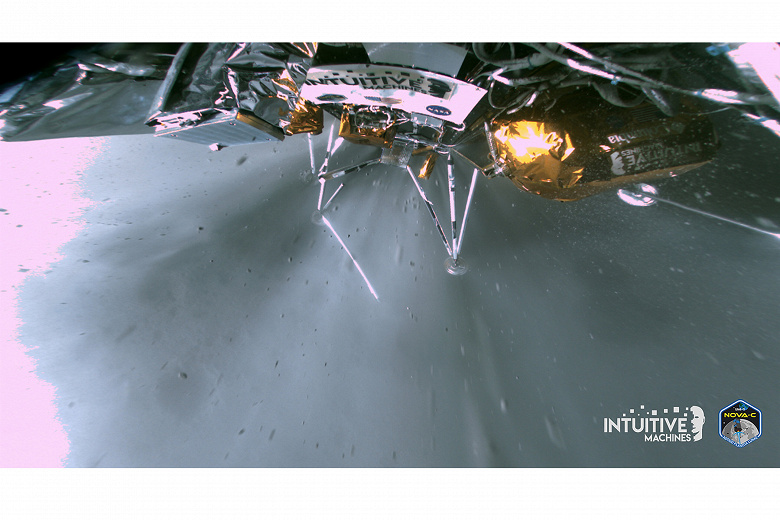And the approaching cold moonlit night creates real obstacles to the continuation of the mission
The first private US lunar module encountered a landing accident. Representatives of the company Intuitive Machines, which developed the landing module, announced that the spacecraft, called «Odyssey» injured one of her legs and turned over. The incident caused difficulties in ensuring communications and providing the module with electricity. Currently the module continues to function, but it is expected that communication may be lost in the near future.
Intuitive Machines CEO Steve Altemus stated that «Odysseus» still receives energy from the sun, but needs to prepare for loss of connection in the near future. The command center decided to give the module some time to «rest» for the duration of the cold moonlit night, hoping that restoration of communication is possible as soon as it ends.
The mission's chief scientist, Tim Crane, raised concerns about problems with electronics and batteries in the extreme cold of the lunar night. He equated it to leaving an electronic device in the cold in Antarctica for 14 nights.
The landing accident was due to a last-minute change in the module's navigation system: from the lander's inactive navigation system, the team had to switch to NASA's experimental guidance lasers, which were originally intended to be the payload for the experiments. The spacecraft flew 1.5 kilometers past the intended landing region and ended up at a higher altitude than expected. As a result, the module descended too quickly and collided with the lunar surface harder than expected. Standing upright in the first moments, the module's engine was activated, and then it slowly descended onto a small slope.

Nevertheless, NASA Administrator Bill Nelson praised the success of the mission, noting that all six space agency experiments on the module continued to operate for six days after landing. However, he noted that there is a significant difference between a crew landing and an instrument group landing.
Intuitive Machines received $118,000,000 from NASA to perform experiments in the moon's mountainous and poorly lit south polar region. This is where NASA plans to send astronauts in the future as part of the Artemis program.
«Odysseus» brought an Apollo-era American flag to the Moon, as well as items from clients, including new insulating fabric from Columbia Sportswear, mini-sculptures by artist Jeff Koons, and cameras from Embry-Riddle Aeronautical University. They had to «eject» and take photographs of the module landing process. However, they were released late on Tuesday.

